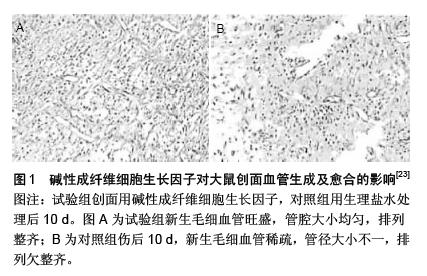| [1] Gros J,ManceauM,Thome V,et al. A common somitic origin forembryonicmuscle progenitorsand satellite cells. Nature. 2005; 435(7044):954-958.
[2] Adams GR, McCue SA. Localized infusion of IGF-Ⅰresults inskeletal muscle hypertrophy in rats. Appl Physiol. 1998; 84(5):1716-1717.
[3] Relaix F,Rocancourt D,Mansouri A,et al. A Pax3/Pax7- dependent population of skeletal muscle progenitor cells. Nature.2005;435(7044):948-953.
[4] Adams GR,McCue SA.Localized infusion of IGF-Ⅰresults inskeletal muscle hypertrophy in rats. Appl Physiol. 1998; 84(5):1716-1717.
[5] Pell JM1,Bates PC. Differential actions of growth hormone and insulin-like growth factor-I on tissue protein metabolism in dwarf mice.Endocrinology. 1992;130(4):1942-1950.
[6] Seale P,Sabourin LA,Girgis-Gabardo A,et al. Pax7 is required for the specification of myogenic satellite cells.Cell. 2000; 102(6):777-786.
[7] Zammit PS,Partridge TA,Yablonka-Reuveni Z. The skeletal muscle satellite cell:the stem cell that came in from the cold.Histochem Cyto-chem.2006;54(11):1177-1191.
[8] Pfannkuche K,Summer H, Li O,et al. The high mobility group protein HMGA2: a coregulator of chromatin structure and pluripotency in stem cells? Stem Cell Rev. 2009;5(3): 224-230.
[9] Louis C,Almeskinders, MD, Jerome A,et al.Herling of experimental muscle strains and the effects of nonsteroidal antiinfammatory medication. Am.J.Sports Med.1986; 14(4): 303-308.
[10] Relaix F,Montarras D,Zaffran S,et al. Pax3 and Pax7 have distinct and overlapping functions in adult muscle progenitor cells.CellBiol.2006;172(1):91-102.
[11] Ashar HR, Chouinard RA, Jr, Dokur M,et al. In vivo modulation of HMGA2 expression.Biochim Biophys Acta. 2010;1799(1-2):55-61.
[12] Obremsky WT, Seaber AV, Ribbeck BM, et al. Biomechanical and histologic assessment of a controlled muscle strain injury treated with piroxicam Am. J. Sports Med.1994;22(4):558-561
[13] Cornelison DD,Filla MS,Stanley HM,et al. Syndecan-3 and syndecan-4 specifically mark skeletal muscle satellite cells and are implicated in satellite cell maintenance and muscle regeneration.Dev Biol.2001;239(1):79-94.
[14] Christiansen J, Kolte AM, Hansen TO,et al. IGF2 mRNA-binding protein 2: biological function and putative role in type 2 diabetes. J Mol Endocrinol. 2009;43(5):187-195.
[15] Arakawa T, Hsu YR, Schiffer SG,et al. Characterization of a cystein-efree analog of recombinant human basic fibroblast growth factor. Biochem Biophys Res Commun,1989;161(1):335-341.
[16] Gospodarowicz D. Purification of a fibroblast growth factor from bovine pituitary.J Biol Chem.1975;250(7):2515-2520.
[17] Mignatti P1,Morimoto T,Rifkin DB.Basic fibroblast growth factor released by single isolated cells stimulated their migration in an autocrine manner. Proc Natl Acad Sci (USA). 1991;88(24):11007-11011.
[18] Muthukrishnan L,Warder E,Mchelt PL. Basic fibroblast growth factor is efficiently released from a cytolsolic storage site through plasma membrane disruptions of endothelial cells. J Cell Physiol.1991;148(1):1-16.
[19] 向峥,孙林辉,余斌.碱性成纤维细胞生长因子mRNA在运动性肌损伤骨骼肌中的表达[J].华南国防医学杂志,2007,21(3): 28-30.
[20] Mignatti P, Morimoto T. FGF: a protein devoid of secretory signal seguence, is release by cells via a pathway independant of the endoplasmic reticulum-golgi complex. J Cell Physiol.1992;151(1):81-93.
[21] Jaye M, Schlessinger J, Craig A.Fibroblast growth factor receptor tyrosine kinases: molecular analysis and signal transduction. Biochem Biochem Acta.1992;1135(2):185-199.
[22] 张凤春,陈云峰.bFGF促进创伤愈合的作用机制研究[J].中华实验外科杂志,1998,(6):493-494.
[23] 余尚昆,黄晓元,张胜南.bFGF对大鼠创面血管生成及愈合的影响[J].医学临床研究,2005,22(5):595-597.
[24] 冯鑫,王生,李国珍.碱性成纤维细胞生长因子对大鼠骨骼肌拉伤修复的影响[J].中国临床康复,2004,8(5):846-847.
[25] Falanga V,Eaglstein WH,Bucalo B,et al.Topical use of human recombinant epidermal growth factor (h-EGF) in venous ulcers. J Dermatol Surg Oncol.1992;18(7):604-606.
[26] Hennessey PJ,Nirgiotis JG,shinn MN,et al.The efects of age and 525 various fat/carbohydrate caloric ratios on nitrogen retention and wound healing in rats. J Pediatr Surg.1991; 26(4):367-372.
[27] Kiyohaza Y,Komada F,lwakawa S,et al.Improvement in wound healing by epidermal growth factor(EGF) ointment.II.Efect of pro.tease inhibitor,natamostat,on stabilization and eficacy of EGF in bum.J Pharmacobiodyn.1991;14(1):47-52.
[28] Celebi N,Erden N,Gonul B,et al. Efects of epidermal growth factor dosage forms on dermal wound strength in mice.J Pharm Pharmacol.1994;46(5):386-387.
[29] Brown GL,Nanney LB,Grifen J,et al. Enhancement of wound healing by topical treatment with epidermal growth factor.N Engl JMed.1989;321(2):76-79.
[30] Zainuddin Z, Newton M, Sacco P,et al. Effects of Massage on Delayed-Onset Muscle Soreness,Swelling,and Recovery of Muscle Function. J Athl Train. 2005;40(3):174-180.
[31] Hill M,Goldspink G.Expression and Splicing of the insulin-like growth factor gene in rodent muscle is associated with muscle satellite (stem)cell activation following local tissue damage. Physiol.2003;549(2):409-418.
[32] Cleynen I, Brants JR, Peeters K,et al. HMGA2 regulates transcription of the Imp2 gene via an intronic regulatory element in cooperation with nuclear factor-kappaB. Mol Cancer Res.2007;5(4):363-372.
[33] McLoon LK,Rowe J,Wirtschafter J,et al.Continuous myofiber remodeling in uninjured extraocular myofibers: myonuclear turnover and evidence for apoptosis. MuscleNerve. 2004; 29(5):707-715.
[34] Relaix F,Montarras D, Zaffran S,et al. Pax3 and Pax7 have distinct and overlapping functions in adult muscle progenitor cells.CellBiol.2006;172(1):91-102.
[35] Nagata Y,Partridge TA,Matsuda R,et al. Entry ofmuscle satellitecells into the cell cycle requires sphingolipid signaling. JCellBiol.2006;174:245-253.
[36] Thorsson O. Ranlanan J. Hurme T, et al: Effects of nonsteroidal antinflanm Mallory medication on satellite cell proliferation during muscle regeneration. Am J Sports. 1998; 26(2):172-176
[37] 孙林辉,余斌,向峥.内源性胰岛素样生长因子在不同状态及运动损伤性骨骼肌的表达[J].中华创伤骨科杂志,2004,6(5):550-553.
[38] Kokaia Z,Gido G,Kingstedt T,et al. Rapid increase of BDNF mRNA levels in Cortical neurons following spreading depression: regulation by glutamatergic mechanisms independent of seizure activity. Mol Brain Res.1993;19(4): 277-286.
[39] Petratos S, Butzkueven H, Shipham K, et al.Schwann cell apoptosis in the postnatal axotomized sciatic nerve is mediated via NGF through the low-affinity neurotrophin receptor. J Neuropathol Exp Neurol. 2003;62(4):398-411.
[40] Ben-Yaakov G,Golan H. Cell proliferation in response to GABA in postnatal hippocampal slice culture. Int J Dev Neurosci. 2003;21(3):153-157.
[41] 马焰,沈定国,赵民,等.碱性成纤维生长因子和神经生长因子对骨骼肌成肌细胞增殖作用的研究[J].解放军医学杂志,1999,24(3): 210-212.
[42] Houenou LJ, McManaman JL, Prevette D, et al.Re-gulation of pu tative muscle-derived neurotrophic factors by muscle activity and innervation : in vivo and in vitro stu-dies. J Neurosci. 1991;11(9):2829 -2837.
[43] Chen G, Birnbaum RS, Yablonka-Reuveni Z, et al.Se-paration of mouse crushed muscle extract Into distinct mitogenic activities by heparin affin ity chromatography. J Cell Physciol. 1994;160(3):563-572.
[44] 邓小华.睫状神经营养因子对体外培养骨骼肌细胞的促增殖效应[J].中国应用生理学杂志,2000,16(1):59. |
.jpg)
